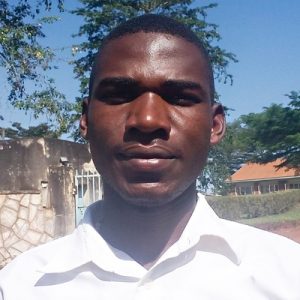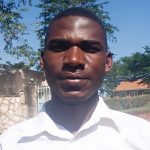"It’s 4 years since our water point broke down and the pump head was stolen," Ms. Christine Asiimwe said to us.
"We resorted to taking water from an unprotected source which has caused typhoid, diarrhea, and poverty because we spend money in buying medications. We need help."
People like Ms. Asimwee in Kyamudikya Community use plastic jerricans to collect water from the nearby unprotected well. They spend a lot of time collecting water that is not safe. As a result, time and money are lost to deal with the effects of waterborne diseases caused by consuming the dirty water.
Fewer than half of the households we observed have latrines and/or bathing rooms. However, the general attitude of the community towards hygiene and sanitation is positive. They seem to understand the importance of good sanitation and hygiene through lack proper knowledge on how to ensure proper hygiene.
The community’s predominant activity is agriculture and some few families rear animals, like cattle and goats. Every day people in this village wake up at around 6am. The men go to directly to work their gardens and women prepare the children to go to school before joining the garden work. They work until about noon when they break to eat leftover food from dinner as lunch.
In most cases, women start doing household chores like preparing dinner, collecting firewood, and fetching water after lunch. Meanwhile, the men go to graze animals and find water for them to drink if it is the dry season. During the rainy season, both go back in the garden to either plant, weed or harvest.
Then on their way home, they collect firewood, water, and foodstuffs to prepare for supper.
In this village supper is the main meal of the day, hence it is given a lot of attention. Preparing some meals takes more than four hours depending on the distances to the water sources, type of food, size of the family, the nature of the cooking equipment, fuel used and the weather conditions.
As a result, most households end going to sleep late in the night - 10pm at the earliest.
Here’s what we’re going to do about it:
Training
Training’s main objectives are the use of latrines and observing proper hygiene practices since these goals are inherently connected to the provision of clean water. Open defecation, water storage in unclean containers and the absence of hand-washing are all possible contaminants of a household water supply. Each participating village must achieve Open Defecation Free status (defined by one latrine per household), prior to the pump installation for a shallow hand-dug well.
This social program includes the assignment of one Community Development Officer (CDO) to each village. The CDO encourages each household to build an ideal homestead that includes: a latrine, hand-washing facility, a separate structure for animals, rubbish pit and drying rack for dishes.
We also implement the Community Led Total Sanitation (CLTS) approach with each of our village partners. This aims to improve the sanitation and hygiene practices and behaviors of a village. During these sessions, village leaders naturally emerge and push the community to realize that the current practices of individual households – particularly the practice of open defecation– are not only unhealthy but affect the entire village. CLTS facilitates a process in which community members realize the negative consequences of their current water, sanitation and hygiene behaviors and are inspired to take action. Group interactions are frequent motivators for individual households to build latrines, use the latrines and demand that other households do the same.
Rehabilitated Well
We will overhaul the borehole in this community, restoring clean water by relining the inside, building a well pad, and installing a new pump.
We are also constructing a new borehole well for the community so that everyone has good water access! Go here to learn more about it.
Note: The GPS coordinates for this project are not exact. We will have a precise location as soon as the project begins!
Improved Sanitation
The aim is that all households own an improved latrine. Many households do not use a latrine but use the bush. Due to open defecation, feces are spread all over the village. This leads to waterborne diseases and contamination of groundwater and surface water. Our aim is that the community is able to live a healthy life free of preventable diseases. We endeavor that at the end of our presence in the community, people will have both access to sustainable, clean water and access to sanitation. We have now organized families to form digging groups for latrine construction, and empowered them with tools to use.

 Borehole Well and Hand Pump
Borehole Well and Hand Pump

























